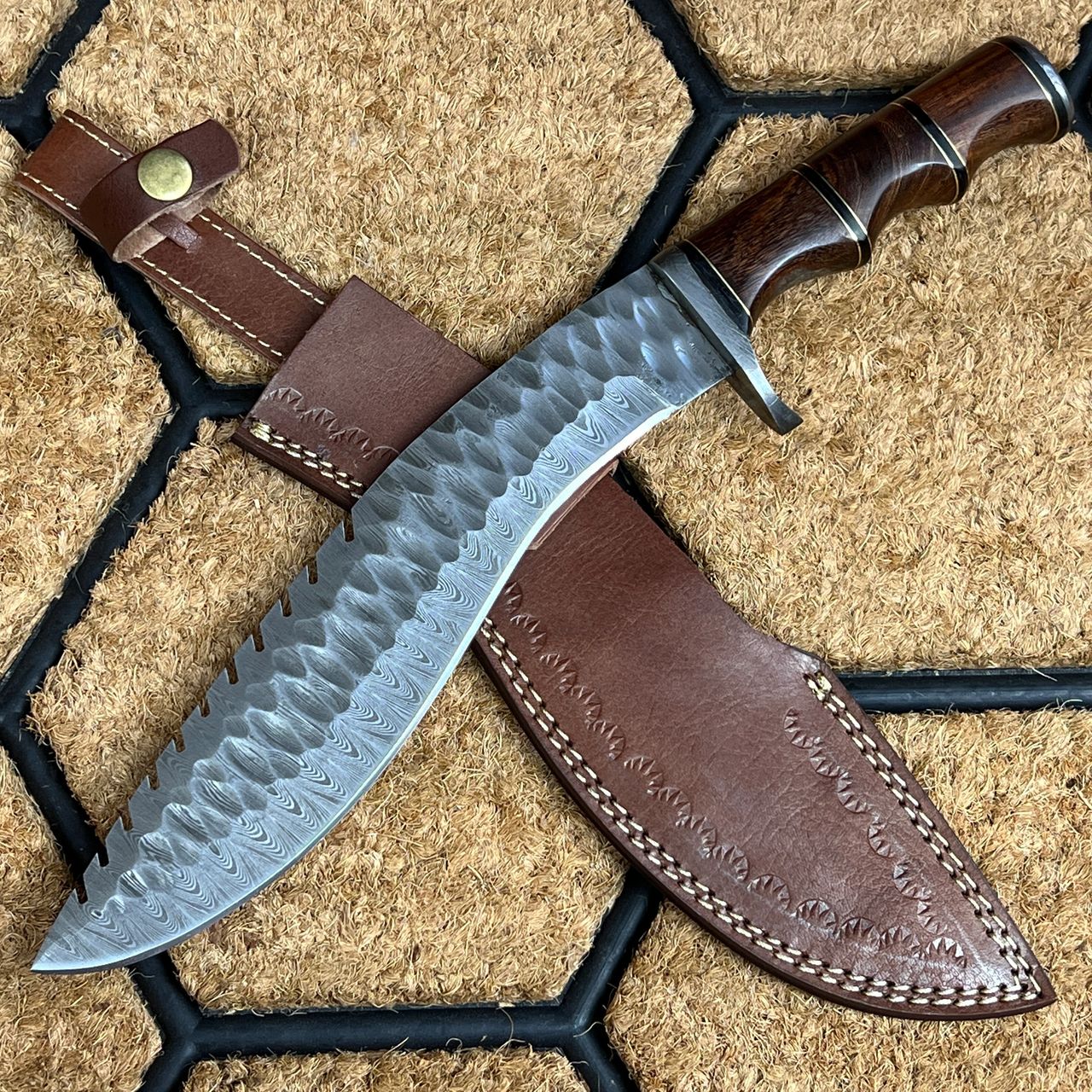Canadian Made Damascus Steel Kukri Knife
The Kukri Knife: What Is It?
A kukri is a curved knife with a single cutting edge that can be used for a wide variety of tasks. Symbolic of the mythical Gurkhas and the nation of Nepal, the sabre is a source of national pride. The Gurkha/Gorkha regiments of the British and Indian armies, as well as the Nepalese national army, all use this knife.
The kukri is known as the Gurkha knife because it has traditionally been carried and issued to Gurkha soldiers. Gurkhas and kukris go well back in history, and the two blades share a same ancestry. Since "Gurkha Knife" refers to both components, their separation would be misleading.
The Gurkhas and Gorkhas of the army all carry and utilise kukris, also known as gurkha knives. Gurkhas are provided a fixed blade, curved single edged knife with a leather sheath. The blade measures between 10 and 13 inches in length.
The Kukri knife is well-known for its efficiency and versatility. It's perfect for cutting, has a pleasant grip, and can be used for a wide variety of tasks. It is particularly well-known for its long and close connection to the Gurkhas and their participation in several wars and operations. No true Gurkha would ever be without his kukri. Additionally, the Kukri is Nepal's national symbol and a weapon whose history has been meticulously recorded in golden letters. As a result, possessing it is both a status symbol and a need due to its fame and significance as a cutting tool.
A kukri is an extremely versatile knife that may be used for chopping, slicing, and dicing in a wide variety of situations. Domestically, it can be employed in and around the house; in the jungle and beyond; and in military operations. The kukri is not just used for cutting; its robust spine and flat panel make it useful as a hammer as well. It has a pointed profile and a sturdy tip, so it can be used for stabbing and digging to a lesser extent.
In what ways does a kukri knife differ from other knives?
The kukri's weight makes it useful as a chopping weapon, while the blade's curved shape generates a "wedge" effect, making it effective and deep when slashing. As the blade curves inward toward the target, the user doesn't have to turn their wrist at an angle to make a chopping action. When a citation is required. The kukri can slice and chop because of its low centre of gravity and sharply angled blade. If you can't find a citation, As the blade's centre of mass passes across the cross section of the target, the edge glides across the surface. Because of this, the kukri can penetrate with an incredible amount of force despite its relatively short length. Due to its construction, the user might cause severe injuries and even break bones.
In what ways does Damascus steel excel over other metals?
Damascus steel, an alloy composed of many layers of steel, is named for the distinctive wave patterns carved into each layer.
According to archaeological evidence, authentic Damascus steel was originally fashioned from an old Indian metal known as Wootz steel. Damascus steel was named after the Syrian city where it was first sold.
In today's world, Damascus steel is typically an alloy of two steels: a harder stainless steel for its flexibility and anti-corrosion qualities, and a steel with a higher carbon content for its sturdiness.
Damascus steel is forged by repeatedly bending and hammering the metal, which creates its distinctive wavy pattern. Knives forged from this material typically cost more than their stainless steel counterparts.
The designs resemble waves and Among knives, the Steel stands out due to its distinctive Damascus pattern. Manufacturing processes leave these patterns on its sides, which are readily apparent.
High-Quality Raw Material Commonly, Damascus steel is a combination of many different steels that have been forge welded together.
Hardness - Good Damascus steel typically registers between 55 and 58 on the Rockwell hardness scale, which is not quite as hard as high carbon steel.
Strength Despite its high carbon and low chromium content, Damascus steel is not as resistant to corrosion as stainless steel. Damascus steel blades, if properly cared for, can last for decades of daily usage.
Practicality - Because of its lower resistance to corrosion, Damascus steel requires regular cleaning and drying after use to prevent rusting. The Damascus blade can also be protected with a thin layer of oil.
What are the benefits of a kukri knife made from Damascus steel?
Blades crafted from Damascus steel are renowned for their strength, sharpness, and durability. Damascus steel is a type of steel that is layered, pounded, and welded. Steel is folded hundreds of times to create hundreds of layers. It can then be reshaped by being twisted, heated, and flattened. The resulting steel patterns are stunning works of art in their own right. Folds that start off hard and become soft at each Crosspoint create a serrated edge that cuts like a saw. Because of this, there is a certain edge to Damascus as well. Blades made from Damascus steel, which are favoured by some as better to stainless steel blades, should also be included. Because of the unique nature of their handcrafted construction, no two of these knives are exactly same.

Comments
Post a Comment